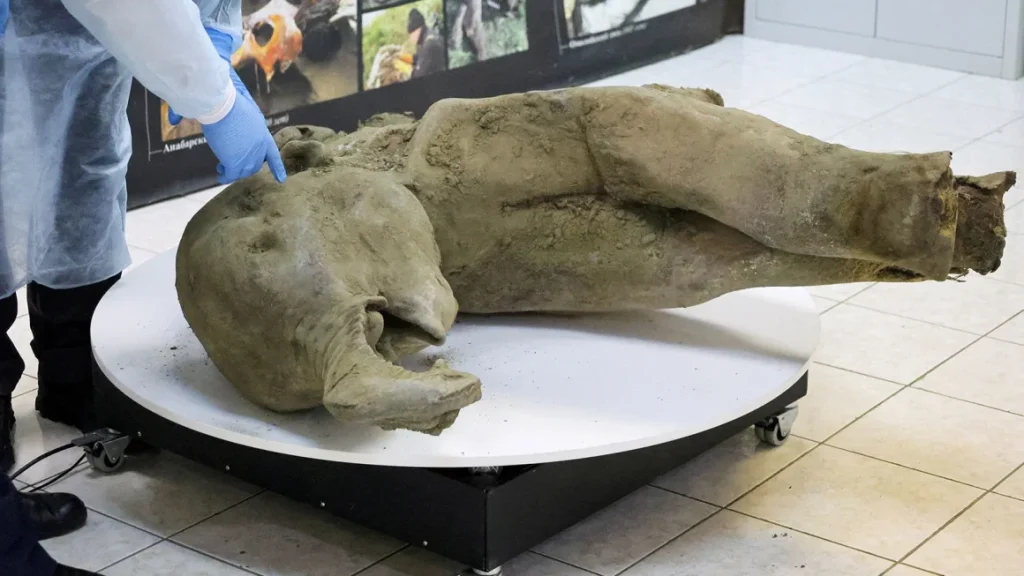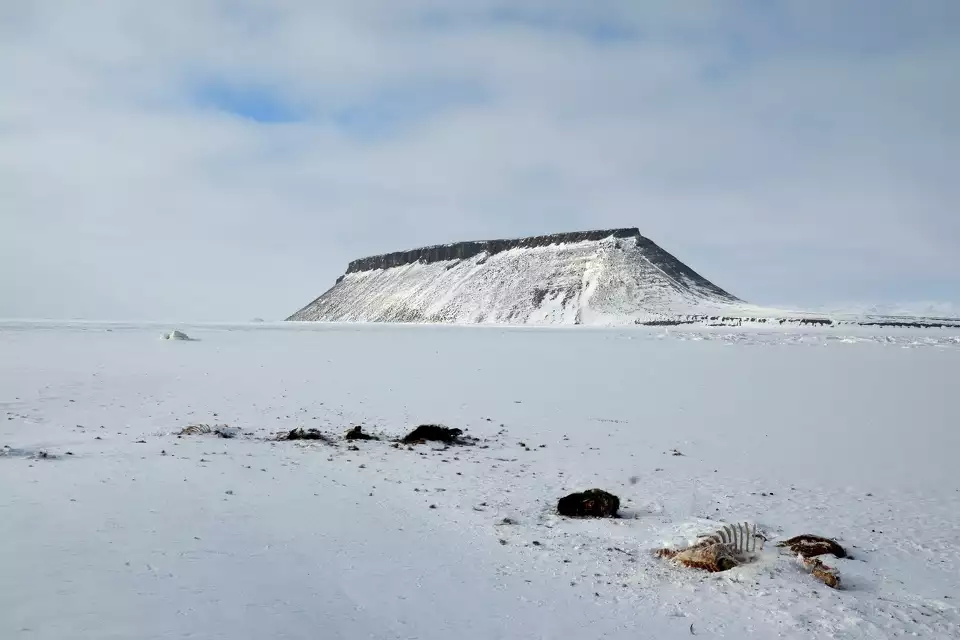Baby mammoth found in Russian crater is the world’s ‘best’ preserved, says scientist

A well-preserved baby mammoth, believed to be around 39,000 years old, was recently uncovered by scientists in a crater in the remote Yakutia region of Russia. This discovery has been hailed as the world’s best-preserved mammoth find to date, offering an unprecedented glimpse into the past. Scientists are excited about the potential for the study of ancient life and are eager to learn more about the extinct species through this exceptional specimen.
The Discovery in Siberian Permafrost
The discovery of the baby mammoth, which has been described as “remarkably intact,” was made by a team of scientists exploring a crater that forms part of the Siberian permafrost. The remains were unearthed in August 2024, and the specimen is thought to have been preserved in the ice for thousands of years. The mammoth is believed to be a young female, estimated to have been only six months old at the time of her death. Her body is so well-preserved that researchers were able to identify fur, hooves, and even parts of her internal organs.
The mammoth was found in the Siberian permafrost, a region notorious for preserving ancient animals and plants due to its consistently low temperatures. These conditions slow the decomposition process, making it possible for scientists to discover specimens that are thousands of years old with exceptional preservation.
Unmatched Preservation
The baby mammoth’s condition has astonished paleontologists. Experts have referred to the find as the most well-preserved mammoth ever discovered, surpassing previous discoveries in terms of preservation. According to scientists who studied the remains, the mammoth’s fur is still intact, and its body structure is almost completely preserved. Even the hooves and trunk, which are often the first to deteriorate, remain largely untouched. Additionally, there are indications of the mammoth’s soft tissues, such as parts of its stomach and intestines, which is extremely rare in such ancient remains.
This level of preservation is significant for several reasons. It allows scientists to study the creature in unprecedented detail and could provide new insights into the lives of mammoths, an extinct species that once roamed the Earth during the Pleistocene Epoch. By examining the preserved remains, researchers hope to gain a deeper understanding of the mammoth’s diet, health, and environmental conditions of the time.
The Importance of the Find
Mammoths went extinct around 10,000 years ago, but the discovery of such a well-preserved specimen is helping researchers unlock secrets about these ancient creatures. Scientists have long been fascinated by the mammoth, and discoveries like this one offer new opportunities to study their biology and behavior. For years, researchers have speculated about the reasons behind the extinction of mammoths and whether they could ever be brought back through advanced genetic techniques.
The baby mammoth’s preservation opens up possibilities for studying its DNA in greater detail than ever before. There is a growing interest in the concept of de-extincting species, with mammoths often cited as a prime candidate for such efforts. Some scientists believe that through cloning or genetic engineering, it may be possible to resurrect the woolly mammoth, although this remains a controversial topic in the scientific community. The baby mammoth’s intact DNA could provide the missing link to unravel how the species lived, adapted to their environment, and eventually disappeared.
Additionally, the baby mammoth’s condition sheds light on the environment in which it lived. By studying the contents of its stomach and the surrounding permafrost, researchers can learn about the flora and fauna that existed in Siberia during the Ice Age. This could help scientists better understand the ecosystems of the past and how they contributed to the mammoths’ survival, as well as how the changing climate might have affected the species.
The Role of Permafrost in Preservation
The region where the mammoth was found is known for its rich history of permafrost preservation, which has provided scientists with many ancient remains in recent decades. As the permafrost thaws due to climate change, discoveries of ancient creatures and plants are being made, offering scientists valuable insights into prehistoric life. However, experts also warn that the warming of the permafrost could lead to the release of ancient microbes and gases, potentially creating new environmental challenges.
The discovery of the baby mammoth is just one example of the extraordinary finds that have been made in the Siberian permafrost. Other discoveries include prehistoric animals such as woolly rhinos, horses, and even ancient human remains. These findings are not only important for paleontology but also for understanding the impact of climate change on the Earth’s ecosystems.
The Future of Mammoth Research
As researchers continue to study the baby mammoth and other finds in Siberia, the potential for groundbreaking scientific advancements in genetics, climate studies, and paleontology remains high. This discovery is expected to fuel further research into ancient ecosystems and the lives of extinct species.
The baby mammoth’s preservation also raises questions about the future of ancient DNA research and whether scientists can one day revive extinct species. While the idea of resurrecting mammoths is still a topic of debate, the discovery of a nearly complete specimen offers new opportunities for scientists to explore the possibilities of genetic engineering.
For now, however, the baby mammoth is a remarkable relic of a bygone era, offering a rare and detailed look at life during the Ice Age. As more discoveries are made in the Siberian permafrost, researchers remain hopeful that they will continue to unravel the mysteries of the past and gain a deeper understanding of the creatures that once roamed the Earth.






